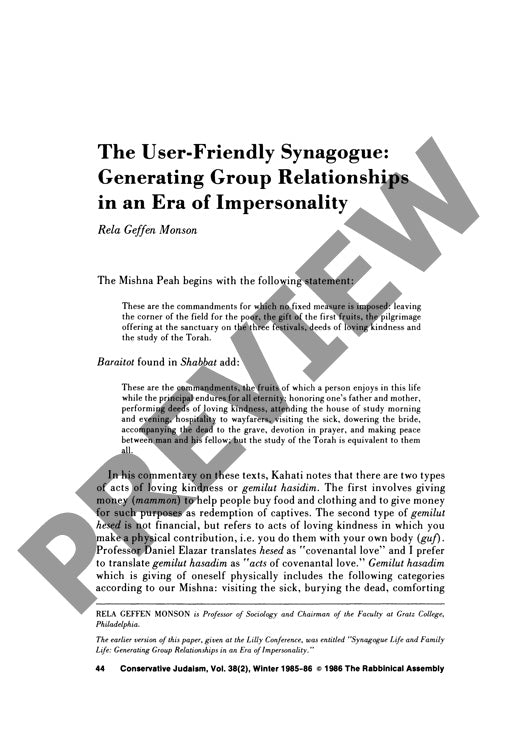The User Friendly Synagogue Generating G
Couldn't load pickup availability
Contemporary synagogues face a crisis of impersonality, with many Jewish communities struggling to maintain meaningful connections in an era of increasing religious specialization and institutional growth. By examining classical Jewish texts on *gemilut hasadim* (acts of covenantal love) and historical synagogue societies (*hevrot*), five key factors emerge as drivers of this impersonality: expanded institutional scale, religious observance delegation to specialists, diminished sacred calendar observance, and widespread congregant ignorance and fear. Through the lens of Parsons' primary group theory, demographic analysis reveals how synagogues can cultivate family-like characteristics via diffuse, affective, and particularistic relationships that prioritize quality over performance and collective orientation. The research investigates diverse family configurations requiring synagogue support, including childless couples, empty nesters, single parents, dual-career families, and interfaith families. Results demonstrate that synagogues must simultaneously develop more intimate internal dynamics while broadening their outreach to non-traditional family structures. Implementation of *havurot* (small fellowship groups), para-rabbinic programs, and revitalized *hevrot* based on traditional concepts of *hesed* (covenantal love) and *arevut* (mutual responsibility) offers a path forward. Synagogues can effectively serve as extended families for diverse constituencies while preserving Jewish communal unity through tolerance and flexible programming that accommodates varying needs and worship preferences.

More Information
-
Physical Description
-
Publication Information
Published 1985-1986
ISBN
-
Publication Credits
Rela Monson

